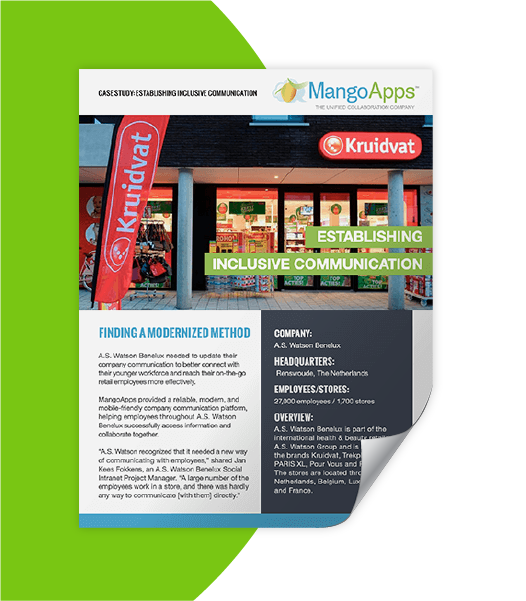In today’s ever-evolving digital landscape, social media has become a cornerstone of any successful marketing strategy. However, have you ever considered harnessing the potential of social media engagement from within your own organization? By utilizing your company’s compelling and diverse internal content, you can ignite a powerful employee advocacy social media strategy. This approach won’t only transform your employees into passionate brand advocates but will also significantly enhance engagement. In this post, we’ll dive into the benefits of employee advocacy. Plus, share some surefire suggestions you can use to create an effective employee advocacy strategy.
The Impact of Neglecting Social Advocacy
Companies that neglect to implement a social advocacy strategy miss out on valuable opportunities. Without a structured employee advocacy strategy, you lose out on harnessing the collective power of your staff and stakeholders as brand advocates. This absence of advocacy can result in limited brand visibility and decreased trust among your target audience. Moreover, it hinders your company’s ability to tap into the organic reach and engagement potential of social media platforms. In the absence of a strategic advocacy plan, companies also struggle to effectively amplify their key messages and initiatives. Thus, losing out on the opportunity to influence public opinion and industry conversations. Furthermore, not having an employee advocacy strategy in place means overlooking the valuable feedback, insights, and market intelligence that engaged team members and advocates can provide. This can hinder informed decision-making and growth potential.
Benefits of an Employee Advocacy Strategy
Before jumping into what makes a great employee advocacy strategy, let’s go over the many reasons why an employee advocacy program is worth investing in. From improving employee engagement and company culture to recruiting enthusiastic new team members and increasing sales opportunities, employee advocacy can benefit your company in a number of ways.
Amplify Your Reach: By empowering your employees to share certain internal communications via their own social media profiles, you can expand your social media reach exponentially. By making use of their established personal networks, your employees can help amplify your reach and give your brand greater visibility.
Boost Your Credibility: The credibility of your company doesn’t only depend on the kind of content you share on social media—it also depends on how that content is perceived. Your employees can add credibility to your brand because people tend to trust messages coming from people they know. When a message is shared by an employee, it is more likely to be perceived as authentic and reliable than when it’s coming from a corporate account.
Engage Your Employees: Employee advocacy ultimately allows you to make your employees feel like valued team members. By engaging them in your social media marketing efforts, they feel a sense of ownership and pride in the brand they represent. The more involved and invested your employees are, the more likely they will want to see your company succeed, leading to improved employee productivity, retention, and morale.
Foster Brand Ambassadors: Empower your team to be advocates for your brand. By fostering employee advocacy through internal communications, you can easily create brand ambassadors for your organization. Simply encourage your team to re-share and engage with company posts on their own profiles. This can go a long way in creating deeper connections with customers, prospects, and business partners.

Tips For a Successful Employee Advocacy Strategy
Implementing an employee advocacy strategy requires thoughtful planning and execution. Here are some essential tips to help you make the most of your company’s employee advocacy efforts.
Define Clear Guidelines: Establish clear guidelines for what employees can share and how they should represent the brand on their personal social media profiles. Provide them with specific content suggestions and encourage them to add their unique perspective.
Training and Education: Offer training sessions or workshops to educate employees about the importance of employee advocacy, the company’s goals, and the benefits it can bring to both the organization and individual employees.
Recognition and Rewards: Consider implementing an employee recognition and reward system to motivate employees to actively participate in advocacy efforts. Recognizing and celebrating top advocates can foster healthy competition and drive engagement in your employee advocacy strategy.
Content Diversity: Ensure that your content strategy includes a diverse range of content types, such as blog posts, videos, infographics, and industry news. This variety keeps employee advocacy fresh and engaging.
Leverage Employee Stories: Encourage employees to share their personal stories and experiences related to the brand. Authentic storytelling can resonate deeply with the audience and humanize your brand.
Monitoring and Analytics: Continuously monitor the performance of your employee advocacy strategy using analytics tools. Track key metrics such as engagement rates, reach, and shares to measure its effectiveness. Make adjustments based on the data to refine your strategy over time.
Promote Employee Advocacy Internally: Ensure that all employees are aware of and have access to the employee advocacy program. Promote it through internal channels like email newsletters, company meetings, and intranet announcements.
Celebrate Successes: Celebrate milestones and successes in your employee advocacy program. Highlight and recognize top advocates, share success stories, and showcase the positive impact on the brand.

How A.S. Watson Engages a Younger Workforce
Learn how A.S. Watson uses MangoApps’ employee app for retail to:
- Engage a young, dynamic workforce
- Increase communication & recognitions
- Establish a culture or interconnectedness
Creating an Employee Advocacy Strategy with MangoApps
As an employee engagement and experience platform, MangoApps makes it easy for any organization to implement its employee advocacy strategy. With MangoApps’ Posts feature, users can easily share content to their LinkedIn or Twitter/X profiles in just two clicks! Plus, the Post feature gives internal comms leads insightful analytics and the ability to track which posts are being liked, shared, and viewed on social media. With this, you can gauge the social media impact of the content your employees share, and which posts are creating the most buzz. Use this valuable information to tailor your social media strategy and maximize your reach on these platforms.
Employee advocacy can help businesses build a strong brand image, increase social media engagement, and drive more revenue. It may take effort and time to create a program that works, but with MangoApps’ Post feature, you can easily create an employee advocacy strategy using your existing internal communications. As your employee advocacy program grows, you’ll effectively build relationships with customers, entice potential new hires, and help your business grow.
Create an effective employee advocacy strategy and take your social media marketing to the next level with MangoApps’ Posts today!







